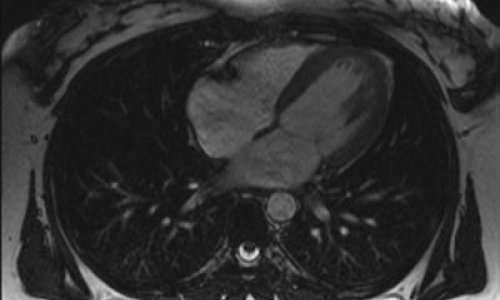Different heart motions by age and gender revealed
Using a new noninvasive imaging technique, scientists said they have discovered important, fundamental differences in heart motion by age and gender. Their study - reported in Circulation: Cardiovascular Imaging, a journal of the American Heart Association - is the first to provide gender- and age-specific data on the motions of the normal heart based on a regional analysis of myocardial velocities covering all 16 segments of the left ventricle.
The results, obtained with magnetic resonance imaging (MRI) tissue phase mapping, are the most precise measurements yet of the left ventricle's complex motions as it contracts and relaxes with each heartbeat.
"This information could change the diagnosis and assessment of heart disease from its earliest stages," said Daniela Föll, M.D., lead author of the study and a senior consultant in cardiology at University Hospital Freiburg in Germany.
The healthy heart performs a complex wringing motion with each beat. The base of the left ventricle changes its direction of rotation up to six times per beat. The ventricle's top rotates counterclockwise during contraction and clockwise during relaxation.
According to Föll, as heart problems develop, various regions of the left ventricle - which pumps blood through the body - change the speed at which they move during each beat.
"MRI enables a complete analysis of muscle motion within the entire left ventricle," she said.
"Knowledge of the exact distribution and timing of the velocities within the ventricle is essential for the exact understanding of the muscle performance in heart disease."
The researchers obtained specific movement data from three adult age groups: 20-40, 41-60 and older than 60 years. They studied 29 male and 29 female healthy volunteers.
"The pronounced age- and gender-related differences that we described stress the necessity of age- and gender-matched control groups in studies evaluating heart-muscle function," Föll said.
She said further research is needed to verify the accuracy of what the small study shows. "If additional trials confirm the findings, MRI tissue phase mapping will optimally serve as a complement to the echocardiograms now used in diagnosing heart disease."
The MRI technology provided images of the ventricle's motions with high temporal resolution of 14 ms. Among the study's specific findings:
• Age and gender strongly influenced the regional motion of the heart muscle during relaxation and contraction.
• Contrary to reports from earlier studies, apex rotation speed decreased with aging.
• Among young participants, women had higher up-and-down motion velocities along the long-axis of the ventricle than men. However, these motion speed differences were reversed in older volunteers. Therefore, the MRI images identified a greater decline in women than men in muscle shortening and expansion from the ventricle's base to its top during both contraction and relaxation.
• Women showed reduced twisting of the ventricle, apex rotation and lower muscle velocity towards the left ventricular center during contraction compared to men.
• Age-related changes in peak motion speeds persisted after the team considered differences in left ventricle shape and blood pressure.
"We were surprised by the differences of myocardial motion we found in women, which were not all explained by anatomical differences," Föll said.
Co-authors are Bernd Jung, Ph.D.; Elfriede Schilli, M.D.; Felix Staehle, Ph.D.; Annette Geibel, M.D.; Jürgen Hennig, Ph.D.; Christoph Bode, M.D.; and Michael Markl, Ph.D.
Source:American Heart Association
11.12.2009











